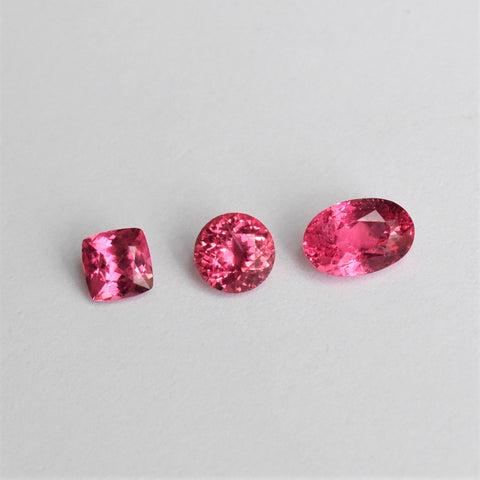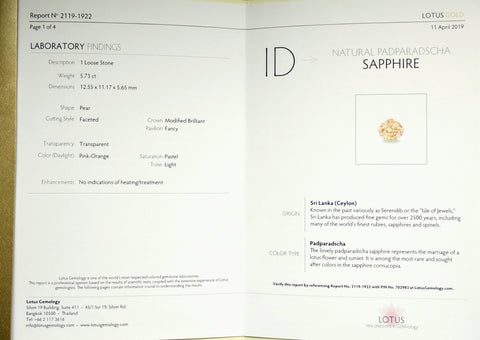Still jet lagged from my recent trip to Venice, I am already packing my bags again! The Las Vegas AGTA show starts Thursday the 29th and guess who will be the first at the door? 😊 We are all curious to see how this year’s show will do as there’s been some reorganization. The AGTA has moved back to its earlier location, the Las Vegas Convention center, and the JCK will be at the Sands Expo and Venetian, with a new special section dedicated to colored gems and diamonds. As a result of this split between locations, some vendors have chosen to just exhibit at the JCK instead, others exhibit at both. So, we will be shuttling back and forth, checking out what’s new at both shows.

Those of you who keep a keen eye on our shop even when things are quiet (like when yours truly is overdosing on gelato while sitting in a gondola), you will have noticed the recent quick turnover of several Mahenge spinels from old stock. We’ve seen a recent and well-deserved flare up in demand for this gorgeous gem and have done some early sourcing just this week. We will feature our treasures on our site in the few days – as quickly as we can do photos and listings.




Jaimeen from Prima gems let me rummage around the older boxes amidst their Vegas packing frenzy and I’ve unearthed a few real “gems” – no pun intended. Two of the pieces I grabbed, a round and a cushion, were actually handpicked to be featured in their JCK booth with mainly has jewelry (whereas the AGTA has mainly gems and some beads) – they were in a different tray and I asked if I could have them. I also lucked out with three small tsavorites, also old stock, from Jaimeen’s private stash. “You work with those,” he said. Too nice to go to the larger wholesalers – or some such. Many of the larger companies that Prima supplies to may not (this is my view) distinguish between the nice and the superb when they manufacture jewelry. So, if my timing is right, I can get some of the true standouts from larger parcels before they move on to the manufacturers.
My Paraiba vendor also called me just before I went off to Europe because a new batch of blue glowies had arrived from Brazil and he wanted me to have first dibs. The parcel hadn’t even been processed yet; he was still doing the basic sorting into price categories. You see, these vendors have to negotiate on larger and unsorted parcels, they make a price, buy, then do the more refined grading. Sometimes these negotiations are just over the best pieces in the parcel where those need to cover costs and most of the profits, the rest is extra. So, for instance, a parcel may contain 3 paraibas in the 3-4 carat range that might be valued at $250,000. Those can be the focus of the negotiations, and the small pieces are graded more precisely later – and it’s those smaller parcels CRD tucks into. We’ve been putting these gems out slowly over the last month but also held back some, so watch for new listings of Paraiba.


Speaking of Paraiba, I also plan to stock up on some more melees. The vendor prices have gone up for those – and they were never cheap to begin with – but they said they’d hold the price for me for a little longer, unless someone comes in and makes an offer for all of it. In any case, while that stock has been selling down slowly, they have told me and I am sure it is true: there’s no additional melee being cut, so what’s left is what there is. I am going to avoid buying 1mm sizes because those ARE already higher in price, even for me, but I can get 1.3, 1.5 or 1.6 and 1.8mm pieces as long as my purchase makes a full carat. Everyone else must buy a full carat of any size they want – this is a seller’s market after all. But I often get treated more nicely, as it were, because my purchases are relatively small but consistent. Plus, I’d never ask to memo melee and they know that, nor do I pay late. The rule for a small buyer like me is to always pay small purchases immediately and do so on a consistent enough basis that the vendors can count on this income.
What else will I buy? Well not sure. I think ruby melee and emerald melee, as well as more smaller sizes is on my list. Also, I will look to get more spinel melee in different colors (some of you have already noticed that I got a pre-Vegas shipment of the platinum color and I have another light grey to be listed). I’m not sure about the calibrated Jedi’s, the largest size I can get is 2.5 and I have that, but I will be there on the first day and the vendor will probably hold some back for me if I let them know early.
Is there anything else you are interested in? Just shoot us a note, pre orders are best but we will try to respond anytime!
And let me end with a few items that are not likely to stay in the shop after our sale because they are going back to the respective owners at the end of the show. If you are eyeing any of these, please contact us, and we will re-memo them. We always value your input as to what items are currently your faves and what you’d like to see more (or less) of, even when you aren’t necessarily buying.












